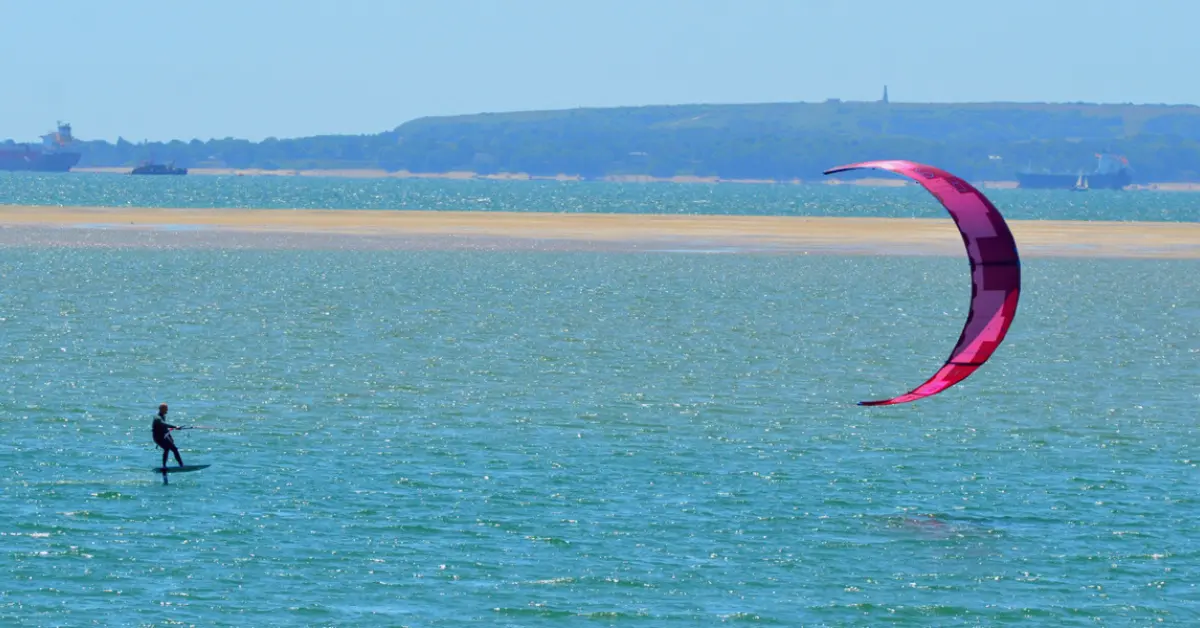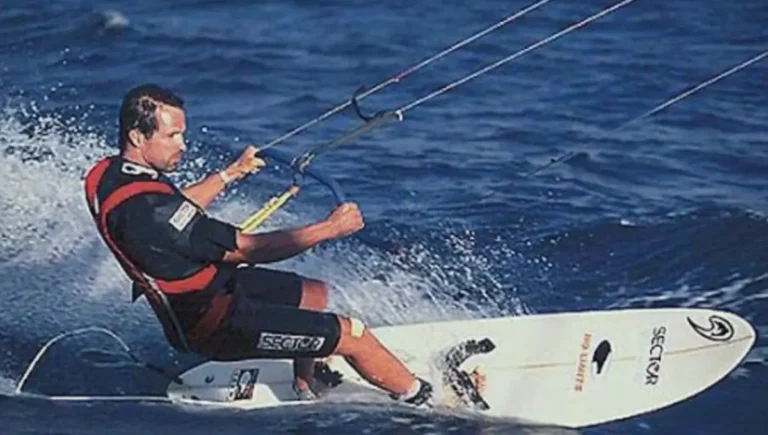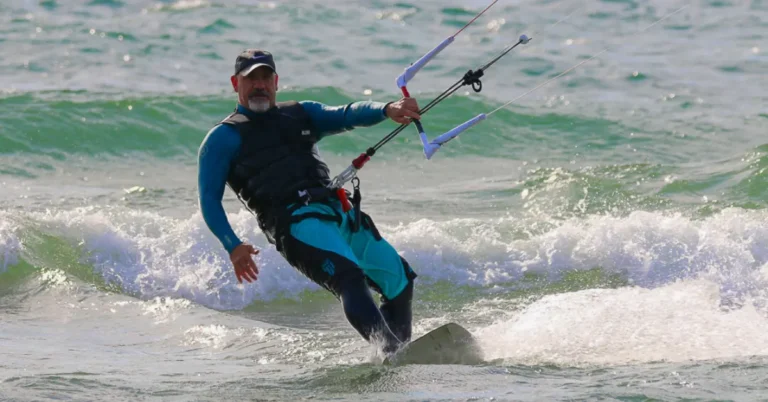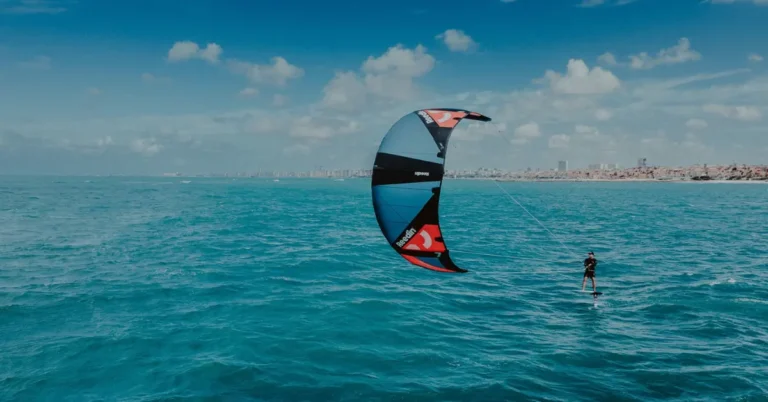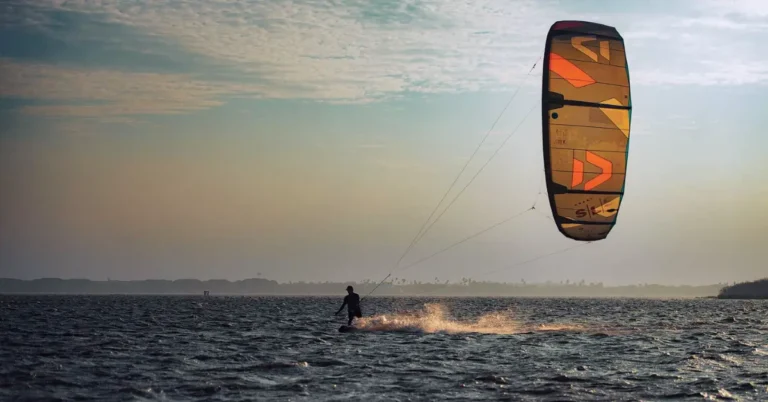Kiteboard and Sail Size Charts
For beginners in kiteboarding, the first step is enrolling in an entire course at an official International Kiteboarding Organization (IKO) school to learn safety rules and techniques. Once ready to hit the water, choose the right kite and board based on weight, height, and skill level.
Intermediate or advanced riders looking to upgrade their gear can learn how to adjust their equipment size. To switch from kilograms (kg) to pounds (lb), remember 1 kg equals 2.2 lb. For meters (m) to feet (ft), remember that 1 m equals 3.3 ft.
Also Read: How many calories does kitesurfing burn?
How to Pick the Right Kiteboard?
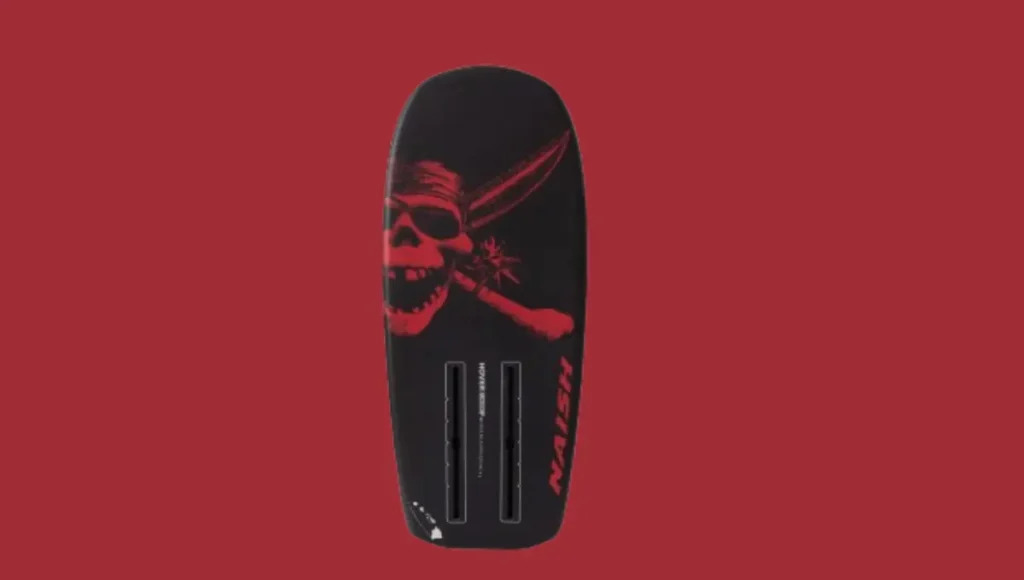
Once you’ve chosen the right size, it’s crucial to understand the critical features of a kiteboard. Beginners should opt for larger kiteboards and smaller kites. More giant boards offer better stability and balance, while smaller kites provide easier control. Trainer kites are ideal for newcomers to practice with.
Intermediate and advanced riders will benefit from larger kiteboards and kites, especially in lighter winds, like during summer. There are various kiteboards: twin-tip, foil, kitesurf, and light wind boards. Experienced surfers or windsurfers may find smaller kiteboards suitable.
Like a surfer’s quiver, having kiteboards and kites of different sizes allows for versatility in various wind conditions and enhances skills. Key kiteboard features include outline shape, rocker, thickness, width, core materials, and strap quality. Understanding these aspects is essential for optimal performance and comfort while kiteboarding.
| Rider Weight (lb/kg) | Kiteboard Size (cm) | Kiteboard Width (cm) |
| 125-150 lb / 56-68 kg | 134-148 | 41 |
| 150-180 lb / 68-81 kg | 140-160 | 43 |
| 180-210 lb / 81-95 kg | 142-165 | 45 |
| > 210 lb / +95 kg | 146-165 | 46 |
What Are the Main Types of Kitesurfing Kites?
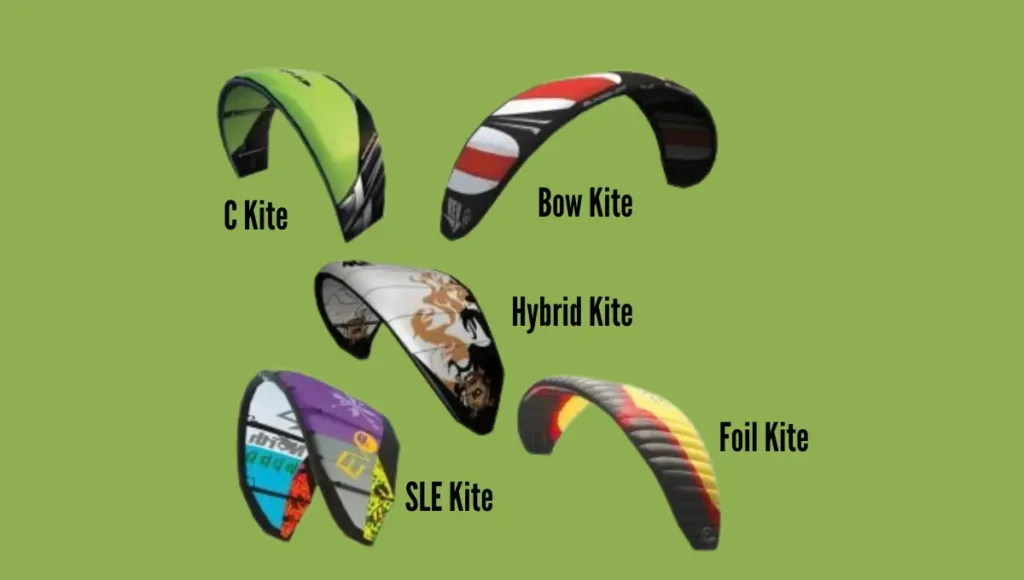
Kite Size Chart
| Rider Weight (kg) | 43 | 50 | 57 | 64 | 70 | 77 | 84 | 91 | 98 | 104 | 111 | 118 | Wind Speed (knots) |
| Rider Weight (lb) | 95 | 110 | 125 | 140 | 155 | 170 | 185 | 200 | 215 | 230 | 245 | 260 | |
| Kite Size (m2) | 3 | 3 | 4 | 4 | 5 | 5 | 5 | 6 | 6 | 7 | 7 | 8 | 34 |
| 3 | 4 | 4 | 5 | 5 | 6 | 7 | 7 | 8 | 8 | 9 | 9 | 28 | |
| 4 | 5 | 5 | 6 | 6 | 7 | 8 | 8 | 9 | 8 | 10 | 11 | 24 | |
| 4 | 5 | 6 | 7 | 7 | 8 | 9 | 9 | 10 | 11 | 12 | 12 | 21 | |
| 5 | 6 | 7 | 7 | 8 | 9 | 10 | 11 | 11 | 12 | 13 | 14 | 19 | |
| 6 | 6 | 7 | 8 | 9 | 10 | 11 | 12 | 13 | 14 | 14 | 15 | 17 | |
| 6 | 7 | 8 | 9 | 10 | 11 | 12 | 13 | 14 | 15 | 16 | 17 | 15 | |
| 7 | 8 | 9 | 10 | 11 | 12 | 13 | 14 | 15 | 16 | 17 | 18 | 14 | |
| 7 | 8 | 10 | 11 | 12 | 13 | 14 | 15 | 16 | 18 | 19 | 20 | 13 | |
| 8 | 9 | 10 | 12 | 13 | 14 | 15 | 16 | 18 | 19 | 20 | 21 | 12 | |
| 8 | 10 | 11 | 12 | 14 | 15 | 16 | 18 | 19 | 20 | 22 | 23 | 11 | |
| 9 | 10 | 12 | 13 | 15 | 16 | 17 | 19 | 20 | 22 | 23 | 24 | 10 |
How do I choose the kite of the right size?
Choosing the right kite size for kiteboarding depends on several factors, including weight, skill level, wind conditions, and riding style. Here are some general guidelines to help you select the appropriate kite size:
Frequently Asked Questions
Conclusion
Determining the appropriate kite size for kitesurfing involves considering factors such as rider weight, wind conditions, skill level, riding style, and kite design. While there are general guidelines and sizing charts available, it’s essential for riders to also factor in personal preferences and experiences.
By consulting with experienced kiteboarders and instructors and utilizing opportunities to test different kite sizes, individuals can make informed decisions to ensure optimal performance, safety, and enjoyment while on the water. Finding the right size kite tailored to individual needs and conditions is crucial for a fulfilling kitesurfing experience.
